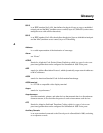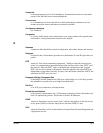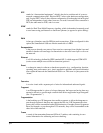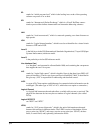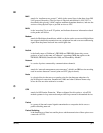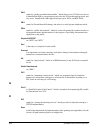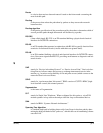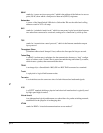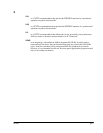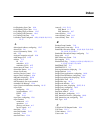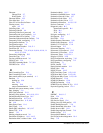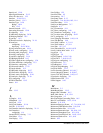
Glossary glo-9
Router
is a device that receives data and routes it based on decisions made concerning the
most desirable path.
Routing
is the process that selects the path taken by packets as they traverse the network
between nodes.
Routing algorithm
is the precise specification of the procedure used by the nodes to determine which of
several possible paths through the network will be taken by a packet.
RS-232C
(often called simply RS-232) is an EIA standard defining a physical and electrical
interface for DCE/DTE connections.
RS-422
is an EIA standard that operates in conjunction with RS-499 to specify electrical char-
acteristics for balanced circuits (circuits with their own ground leads).
RS-449
is an EIA standard defining a physical and electrical interface for DCE/DTE connec-
tions. It has more signals than RS-232, providing such features as diagnostic and bal-
anced circuits.
S
SAP
stands for “Service Advertising Protocol” or “Service Access Point.” Service Adver-
tising Protocol allows routers and servers to exchange internetwork service infor-
mation; e.g., locations and availability of file and print servers (which connect to the
network at Service Access Points.
SDLC
stands for “synchronous data link control,” IBM's version of CCITT's HDLC (high-
level data link control) bit-oriented protocol.
Segmentation
is the same as Fragmentation.
SLT
stands for Single Line Telephone. When configured for this option, a voice/FAX
module operates in loop start mode and provides the loop to the attached device.
SNA
stands for IBM's “Systems Network Architecture.”
Spanning Tree Algorithm
is a method employed in bridging that avoids closed loops in the data path by deter-
mining the bridge with the lowest “path cost,” which is the cost of transmitting a frame
onto the LAN.



